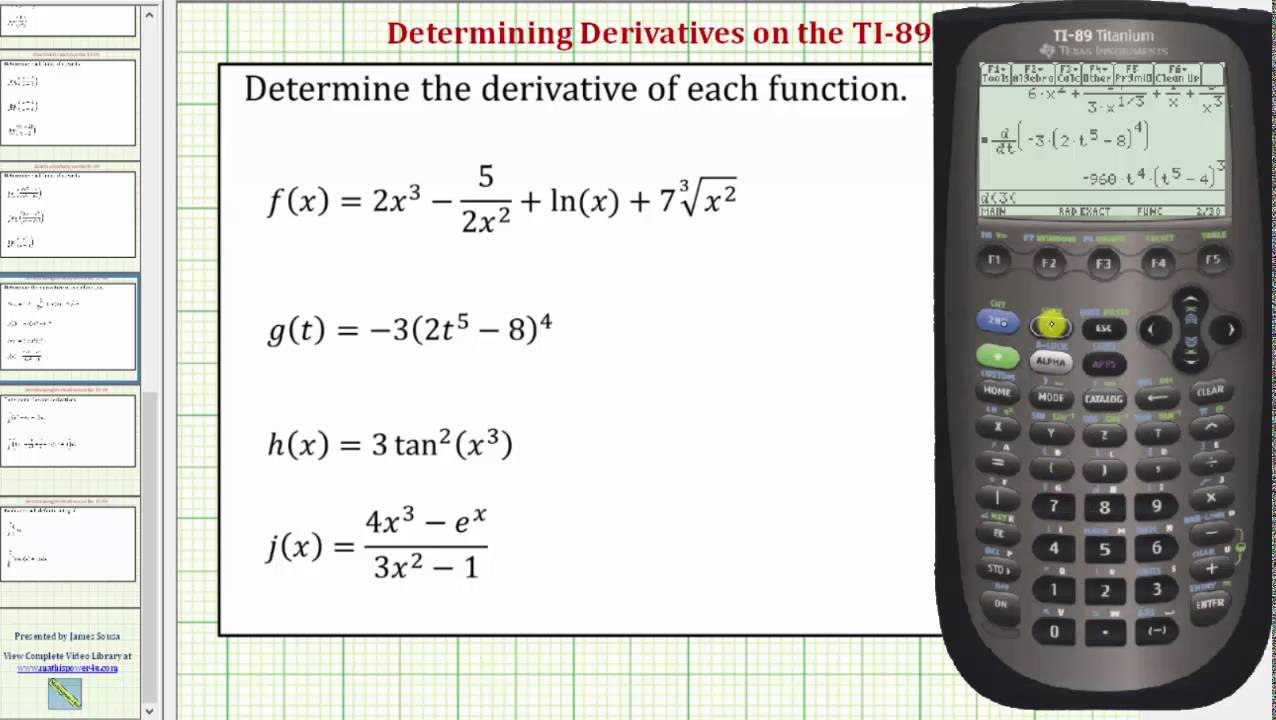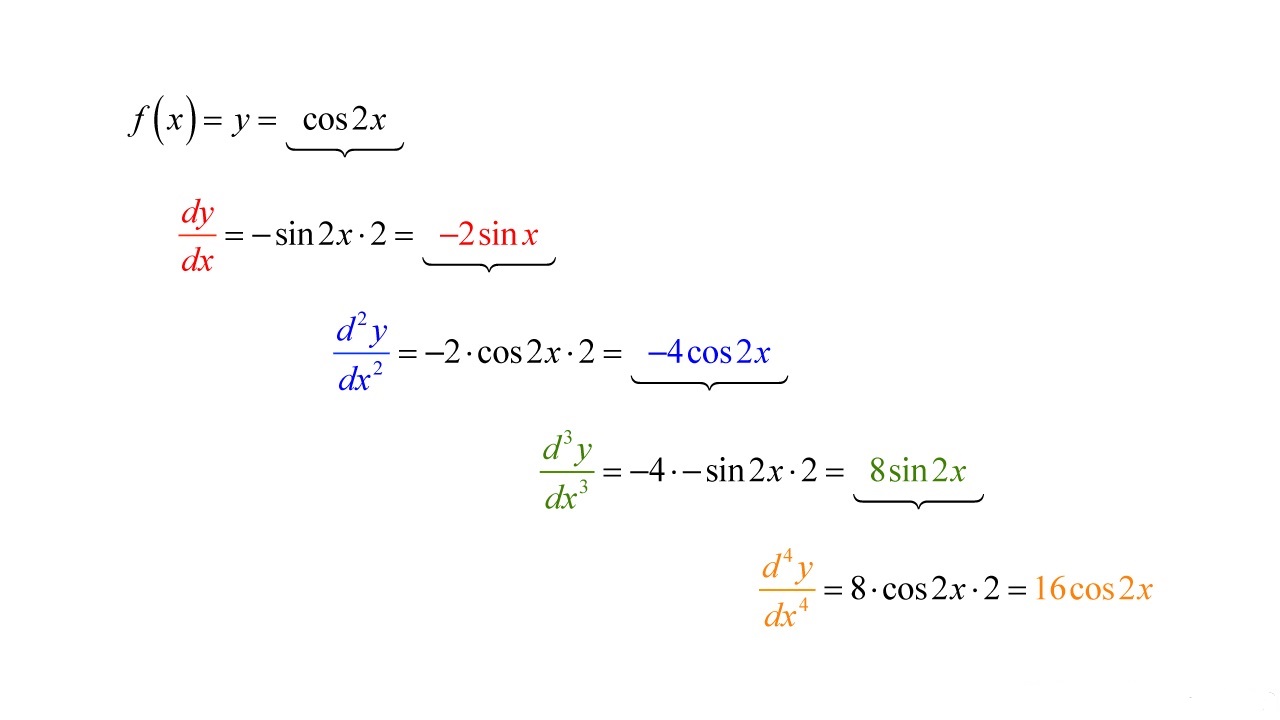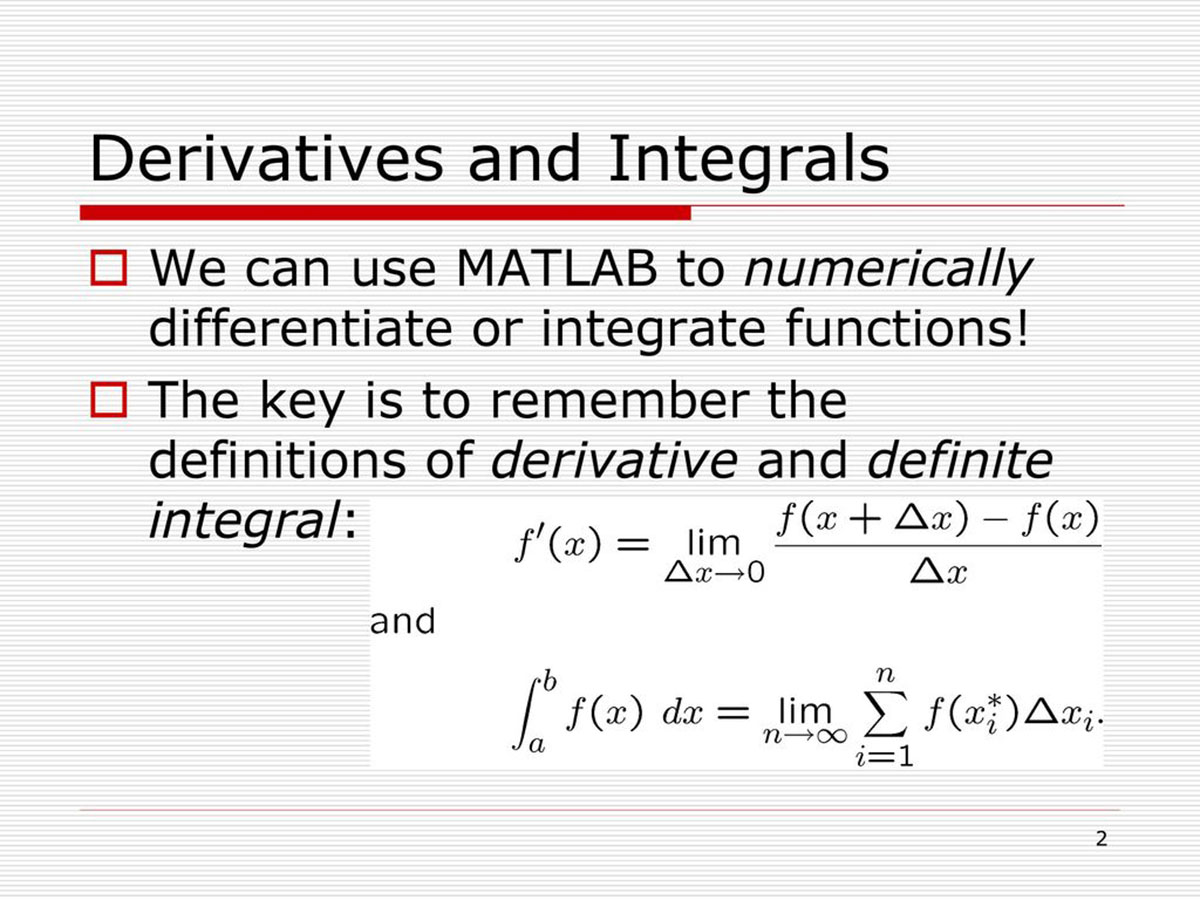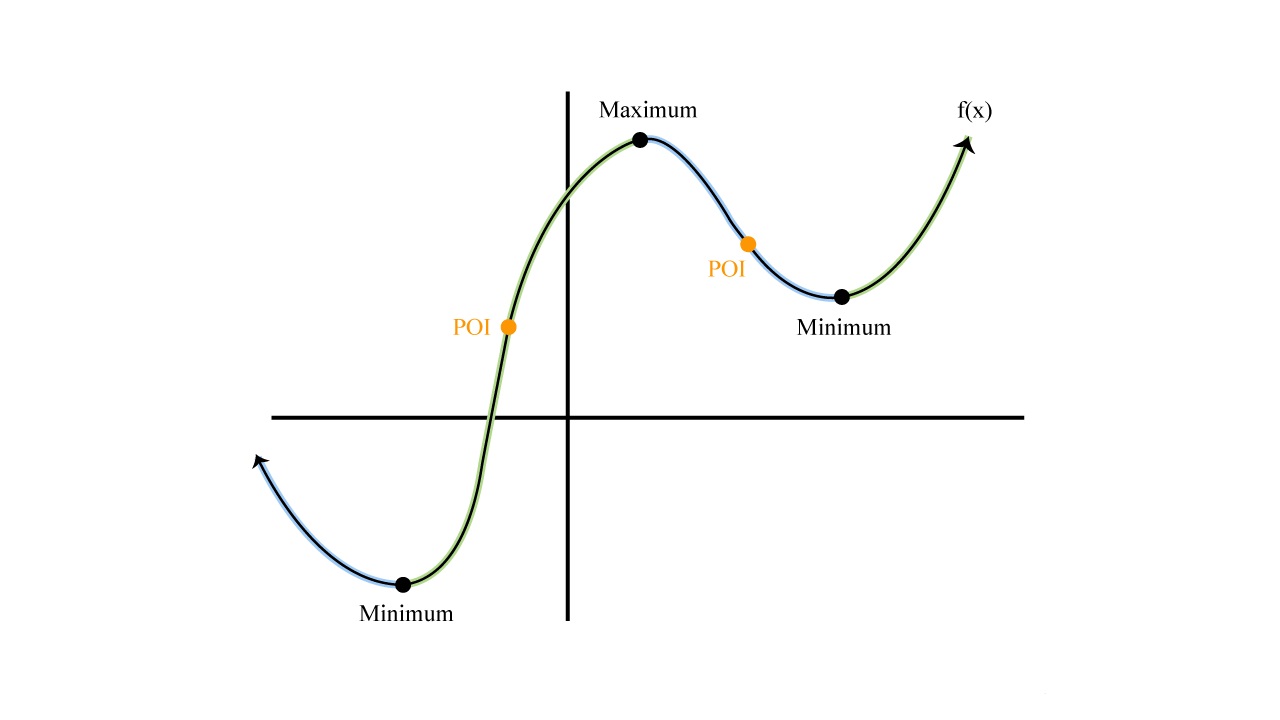

Finance
How To Calculate Derivatives On TI-84
Published: October 5, 2023
Learn how to calculate derivatives on your TI-84 calculator with our step-by-step guide. Perfect for finance students and professionals.
(Many of the links in this article redirect to a specific reviewed product. Your purchase of these products through affiliate links helps to generate commission for LiveWell, at no extra cost. Learn more)
Table of Contents
Introduction
When it comes to the world of finance, having a solid understanding of derivatives is essential. Derivatives are financial instruments that derive their value from an underlying asset such as stocks, bonds, commodities, or currencies. They play a crucial role in risk management, speculation, and hedging strategies.
Calculating derivatives is a fundamental skill that allows investors and traders to determine the rate at which the value of a derivative changes with respect to the underlying asset. This knowledge is invaluable for making informed investment decisions and managing portfolio risks effectively.
One powerful tool that can aid in calculating derivatives is the TI-84 graphing calculator. Known for its versatility and user-friendly interface, the TI-84 offers a range of functions and features that can streamline the derivative calculation process.
In this article, we will explore how to use the TI-84 to calculate derivatives, step-by-step. Whether you’re a finance student, a professional, or someone interested in understanding derivatives, this guide will provide you with the necessary knowledge to utilize the TI-84 effectively for this purpose.
Before we delve into the specifics of using the TI-84 for derivative calculations, it’s important to have a basic understanding of derivatives and their significance in the finance industry. Let’s start by exploring the concept of derivatives in more detail.
Basic Operations on TI-84
Before we dive into calculating derivatives on the TI-84, it’s essential to familiarize ourselves with the basic operations and functions available on the calculator. This knowledge will lay the foundation for understanding how to utilize the TI-84 for derivative calculations.
The TI-84 offers a wide range of features and functions that make it a powerful tool for various mathematical and financial calculations. Here are some basic operations you need to know:
Arithmetic Operations:
The TI-84 allows you to perform basic arithmetic operations such as addition, subtraction, multiplication, and division. The calculator has dedicated buttons for these functions, making it easy to input and evaluate mathematical expressions.
Function Graphing:
One of the standout features of the TI-84 is its ability to graph functions. This allows you to visualize mathematical equations and analyze their behavior. You can input functions of the form y = f(x) and plot them on the calculator’s graphing screen. This feature is particularly useful when working with equations involving derivatives.
Table Functionality:
The TI-84 also has a built-in table functionality that allows you to generate a table of values for a given function. This can be extremely helpful when you need to evaluate a function at multiple points or when you want to observe the behavior of a function over a range of inputs.
Store and Recall:
The TI-84 allows you to store and recall values using variables. This feature is useful for storing intermediate calculations or constants that you frequently use in your calculations. You can assign values to variables and access them later in your calculations without having to re-enter the values.
Matrix Operations:
If you’re dealing with matrices in your finance calculations, the TI-84 provides functions for performing various matrix operations. From basic matrix arithmetic to finding determinants and solving systems of equations, the calculator can handle a wide range of matrix-related calculations.
These are just a few of the basic operations and functions available on the TI-84 calculator. Familiarizing yourself with these features will provide a strong foundation for utilizing the calculator to calculate derivatives effectively. Now that we have covered the fundamentals, let’s move on to understanding derivatives in more detail.
Understanding Derivatives
Derivatives are financial instruments that derive their value from an underlying asset. They are contracts between two parties that specify the conditions under which the derivative will be bought or sold in the future. The value of the derivative is linked to the price of the underlying asset, and as such, it can fluctuate based on changes in the asset’s value.
One of the key concepts in understanding derivatives is the concept of a derivative’s rate of change. The rate at which the value of a derivative changes with respect to the underlying asset is known as the derivative’s derivative. This concept is crucial for investors and traders to assess the risk and potential return of a derivative.
Calculating the derivative can help investors determine how sensitive the value of the derivative is to changes in the underlying asset. This information is essential for managing risk and constructing investment strategies. For example, if a derivative has a high delta, which measures the rate of change, it means that the derivative’s value will be greatly affected by even small changes in the underlying asset.
Derivatives are widely used in financial markets for various purposes, including speculation, risk management, and hedging. Speculators use derivatives to bet on the future direction of an asset’s price, with the potential for significant profits or losses. On the other hand, hedgers use derivatives to protect themselves from adverse price movements by offsetting potential losses in the underlying asset with gains in the derivative.
Derivatives come in many forms, including options, futures contracts, swaps, and forwards. Each type of derivative has its own unique characteristics and uses in the financial world. Understanding the different types of derivatives and how they are priced is essential for effective risk management and investment strategies.
Now that we have a foundational understanding of derivatives, let’s explore how we can use the TI-84 calculator to calculate derivatives and make informed investment decisions.
Using the TI-84 for Derivative Calculation
The TI-84 graphing calculator can be a valuable tool for calculating derivatives in finance. Its intuitive interface and built-in functions make it efficient and convenient for this purpose. Here are some key features and steps to follow when using the TI-84 for derivative calculation:
Function Entry:
The first step in calculating derivatives on the TI-84 is to enter the function you want to differentiate. Press the “Y=” button to access the function editor and input the desired function. Make sure to use the appropriate syntax and include any necessary variables.
Derivative Function:
Once you have entered the function, navigate to the “CALC” menu and select the “dy/dx” option. This will generate the derivative function of the entered function with respect to the independent variable. The calculator will display the derivative function, which you can either evaluate or graph.
Evaluation:
If you wish to evaluate the derivative at a specific point, enter the desired value for the independent variable and press the “ENTER” button. The calculator will compute the value of the derivative at that point and display the result.
Graphing:
The TI-84 also allows you to graph the derivative function alongside the original function. This can provide valuable insights into the relationship between the function and its derivative. To graph the derivative, navigate to the “GRAPH” menu and verify that both the original function and derivative function are selected. The calculator will plot the graphs on the screen, allowing you to analyze their behavior.
Table Generation:
If you need a table of values for the derivative function, you can generate one using the “TABLE” feature. Access the “TABLE” menu, enter the starting and ending values for the independent variable, and specify the increment. The TI-84 will generate a table of the derivative function values for the specified range.
By utilizing the above features and steps, you can efficiently calculate and evaluate derivatives on the TI-84. This tool can not only help you understand the rate of change of a function but also enable you to make informed investment decisions based on derivative analysis.
Now, let’s dive into a step-by-step guide on how to calculate derivatives on the TI-84 graphing calculator.
Step-by-Step Guide to Calculating Derivatives on TI-84
Calculating derivatives on the TI-84 graphing calculator is a straightforward process that involves a few simple steps. Follow this step-by-step guide to compute derivatives efficiently:
Step 1: Enter the Function
Press the “Y=” button to access the function editor on the calculator. Input the equation you want to differentiate using the appropriate syntax. Make sure to include any necessary variables and constants.
Step 2: Access the Derivative Function
Navigate to the “CALC” menu. Select the “dy/dx” option, which represents the derivative with respect to the independent variable. The calculator will generate the derivative function based on the entered equation.
Step 3: Evaluate the Derivative
If you want to evaluate the derivative at a specific point, input the value of the independent variable and press the “ENTER” button. The calculator will compute and display the value of the derivative at that point.
Step 4: Graph the Derivative
To graph the derivative function alongside the original function, navigate to the “GRAPH” menu. Confirm that both the original function and the derivative function are selected for plotting. The calculator will display the graphs on the screen, allowing you to analyze their relationship.
Step 5: Generate a Table of Values
If you need a table of values for the derivative function, access the “TABLE” feature. Enter the starting and ending values for the independent variable and specify the increment. The TI-84 will generate a table displaying the corresponding values of the derivative function for the specified range.
By following these steps, you can easily calculate and evaluate derivatives on the TI-84 graphing calculator. This process allows you to gain valuable insights into the rate of change of a function and make informed decisions in the realm of finance.
Now that you have a step-by-step guide to calculating derivatives on the TI-84, let’s explore some tips and tricks that can further enhance your efficiency in derivative calculations.
Tips and Tricks for Efficient Derivative Calculations
Calculating derivatives on the TI-84 graphing calculator can be made even more efficient with the help of some useful tips and tricks. These techniques can save you time and streamline your derivative calculations. Here are a few tips to consider:
1. Use Variables:
Assign variables to constants or frequently used values in your calculations. This allows you to easily modify and reuse these values without having to re-enter them. For example, if you frequently use the value of π, assign it to a variable like “pi” (e.g., pi = 3.14159).
2. Check Syntax:
Double-check your syntax to ensure that you have entered the function correctly. A small error in the syntax can lead to inaccurate results. Use parentheses whenever necessary to avoid confusion and ensure proper order of operations.
3. Utilize Previous Answers:
Take advantage of the previous answers stored in the calculator’s memory. When performing multiple calculations, you can recall the previous results instead of manually typing in the values again. This can save time and minimize the risk of input errors.
4. Customize Settings:
Personalize the calculator settings to suit your preferences and needs. Adjust the display brightness, font size, and other settings to enhance readability. Additionally, you can customize the table settings to change the layout and format of the generated tables according to your requirements.
5. Practice with Sample Problems:
To become more proficient in derivative calculations on the TI-84, practice with sample problems. Work through different types of functions and explore various scenarios to gain confidence and familiarity with the calculator’s capabilities. The more you practice, the more comfortable you will be with derivative calculations.
6. Utilize Online Resources:
Take advantage of online resources such as video tutorials, forums, and cheat sheets that provide additional guidance for using the TI-84 calculator. These resources can offer alternative approaches, troubleshooting tips, and advanced techniques to enhance your derivative calculation skills.
By incorporating these tips and tricks into your derivative calculations on the TI-84 calculator, you can optimize your efficiency and accuracy. Now, let’s explore some common errors and troubleshooting techniques to further fine-tune your derivative calculations.
Common Errors and Troubleshooting
While working with derivatives on the TI-84 calculator, you may encounter some common errors or face challenges that can impact your calculations. By being aware of these potential issues and knowing how to troubleshoot them, you can overcome obstacles and obtain accurate results. Here are some common errors and troubleshooting techniques:
Error Messages:
If you receive an error message on your TI-84 calculator while performing derivative calculations, don’t panic. Some common error messages you may encounter include “ERR: INVALID DIM” or “ERR: WINDOW RANGE”. These errors typically occur when there is a problem with the input, setting, or range. Double-check your inputs, adjust your settings, or ensure that the range is appropriate.
Syntax Errors:
Syntax errors can occur when you incorrectly enter the function or command on the calculator. Check for missing or misplaced parentheses, incorrect use of brackets, or improper use of operators. Verifying the syntax can help resolve these errors and ensure accurate derivative calculations.
Undefined Values:
Derivatives may yield undefined values at certain points, such as at sharp corners or vertical asymptotes. If you encounter undefined values in your derivative calculations, it could mean that the function is not differentiable or that the derivative does not exist at those particular points.
Graphing Issues:
Graphing problems may arise when plotting the original function or the derivative function. Ensure that the appropriate functions are selected for graphing, and adjust the window settings if necessary. If the graphs appear distorted or do not reflect the expected behavior, consider modifying the window range or increment.
Input Errors:
Mistakes in entering the function or variables can lead to inaccurate derivative calculations. Double-check your inputs to ensure that you have accurately entered the equation, included the necessary variables, and used the correct syntax. A small error in the input can make a significant difference in the results.
Resetting and Restarting:
If you encounter persistent issues or are unsure how to resolve a problem, consider resetting or restarting the calculator. Resetting can restore the calculator’s default settings and clear any temporary issues. Remember to save any important data before resetting to avoid losing your work.
By being mindful of these common errors and troubleshooting techniques, you can overcome obstacles and ensure accurate derivative calculations on the TI-84 calculator. Now, let’s conclude our discussion on using the TI-84 for derivative calculations.
Conclusion
Understanding and calculating derivatives is a crucial skill for anyone working in finance. The TI-84 graphing calculator serves as a powerful tool to simplify and streamline the process of calculating derivatives. By following the steps outlined in this article, you can leverage the capabilities of the TI-84 to efficiently compute derivatives, evaluate their values, and graph their behavior.
Throughout this article, we have explored the basics of derivatives, the essential operations on the TI-84 calculator, and the step-by-step process for calculating derivatives. We have also provided tips and tricks to enhance your efficiency in derivative calculations and troubleshooting techniques to overcome common errors.
Remember, practice makes perfect. Continuously working with derivatives on the TI-84 calculator, practicing with sample problems, and exploring online resources will further develop your proficiency in these calculations. The more you familiarize yourself with the calculator’s functions and features, the more confident you will become in utilizing it for derivative analysis and decision-making in the realm of finance.
Whether you are a finance student, a professional investor, or someone interested in understanding derivatives, the knowledge and skills acquired through using the TI-84 for derivative calculations will prove invaluable. By harnessing the power of this versatile calculator, you can gain deeper insights into financial markets, manage risks more effectively, and make informed investment decisions.
In conclusion, the TI-84 graphing calculator is an indispensable tool for calculating derivatives in the world of finance. Embrace its capabilities, follow the provided guidelines, and continue to expand your knowledge and experience. With the TI-84 at your side, you are equipped to navigate the complexities of derivative calculations and unlock opportunities in the financial landscape.














